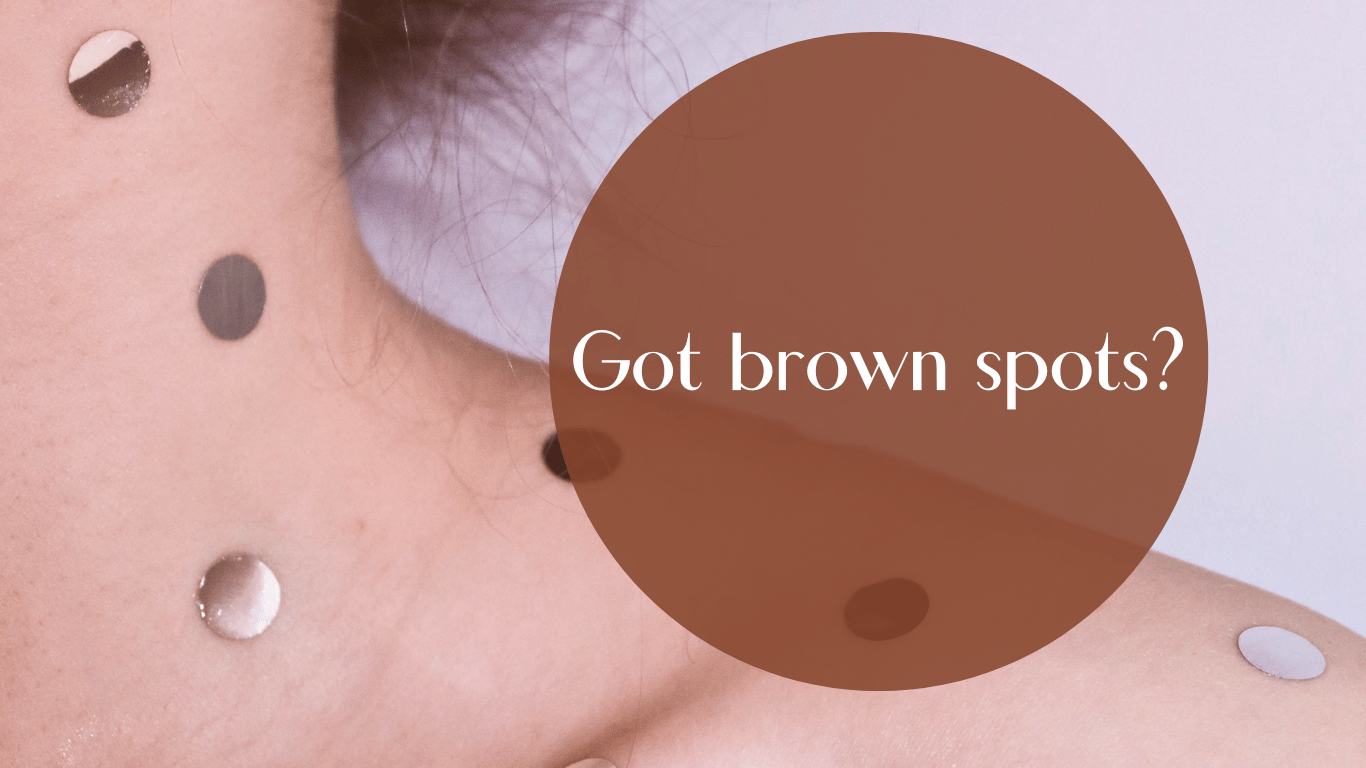The first thing any dermatologist will tell you is to wear sunscreen, a hat, and UV protective clothing. When selecting sunscreen, ensure it guards against UVA, UVB rays, and visible light. Visible light can stimulate melanin production in your skin.
Your skin is your body’s largest organ. It protects you from the environment, helps regulate your temperature, and represents your health.
Dark spots and light tan patches on my skin
When you notice a brown spot on your skin, do you ask yourself… Is it just a few freckles merging like they do every summer? Am I developing sunspots? Does it make me look older? Could it be cancerous? Should I see my primary care doctor or visit a dermatologist?
If you are asking yourself these questions, it is time to get a skin check from a board-certified dermatologist, especially if you have not had one before.
What does the color brown mean in the skin?
Melanin is a component of our skin that imparts color. All skin types, from fair to dark, have melanin. The lighter the skin tone, the less melanin. The darker the skin tone, the more melanin. Redheads have a different kind of melanin.
What causes brown spots on my skin?
Melanin is behind those as well. There are several reasons why people’s skin can have more melanin, including sun exposure, hormones, medications, genetics, and metabolic disorders.
What are the symptoms, conditions, and treatments for brown spots?
Lentigines
Lentigines, also called age spots or liver spots, are dark patches on the skin caused by too much sun exposure. They are more common as people get older. Once they appear on the skin, they do not fade or go away.
Treatment options:
- Skin lightening creams
- Cryotherapy
- Chemical Peels
- Laser treatments
Ephelides (freckles)
Different from lentigines, ephelides are small, flat, red to light-brown spots on the skin, usually in fair-skinned individuals. They are caused by exposure to sunlight and genetic factors. They can fade with age and reduced sun exposure.
Treatment options:
- Sun protection and sun avoidance
- Skin lightening creams
- Chemical peels
- Laser treatments
Moles
These common skin growths appear as small, dark brown spots. Genetic factors create moles, which consist of clusters of pigmented cells and can appear anywhere on the body.
Treatment options: Typically, we do not remove benign moles. If a mole is changing, rubbing on clothing, or is cosmetically bothersome, there may be reason to remove it.
Seborrheic Keratosis
These are common, genetic, non-cancerous skin growths that look waxy, scaly, and slightly raised. These growths can appear anywhere on the body and vary in color from light tan to black. They are harmless and more common as people age.
Treatment options:
- Cryosurgery
- Shave removal
Melanoma
Genetics and exposure to UV light cause melanoma, a dangerous form of skin cancer. It develops in cells that produce pigment (melanocytes). Skin cancer can look like a new growth or change in a mole. It can spread and be dangerous if not treated early.
Early detection of melanoma is the key for better outcomes. Studies show that annual skin exams decrease the risk of dying from melanoma by 50%. Patients cannot see approximately 30% of their own skin.
Early melanoma typically has no symptoms. It does not bleed, itch, or cause pain in the early stages. By the time someone else sees a melanoma on your skin or you can feel symptoms, it is typically advanced. This highlights the importance of annual skin exams as part of your wellness regimen.
Treatment options:
- Surgery
- Immunotherapy
- Chemotherapy
Melasma
Melasma causes brown or gray-brown patches, usually on the face. Sun exposure and hormonal changes, like pregnancy or birth control pills, can often trigger it. Melasma can be misdiagnosed as lentigines, because both are caused by UV light and found on sun-exposed skin.
While lasers are an option for melasma treatment, they are not the first line of treatment because the condition can be worsened by certain lasers. Accurate assessment by a dermatologist can direct patients to safe and effective treatments.
Treatment options:
- Discontinue exogenous hormones
- Strict daily tinted sunscreen application
- Sun avoidance
- Topical skin lightening creams
- Chemical peels
- Oral prescription medications
- Laser treatments
Conditions of Diffuse Hyperpigmentation
Diffuse hyperpigmentation is when large areas of skin become darker due to more melanin production. Common causes include hormonal, metabolic, inflammatory disorders, and medications. Treatment depends on the condition.
Why it is important to see a dermatologist before seeking treatments for your brown spots
A dermatologist is a medical doctor specializing in diagnosing and treating skin problems. They undergo extensive training, including medical school, a dermatology residency, and sometimes additional training in specific areas. This education typically spans over ten years.
It is important to see a dermatologist if you have brown spots on your skin. A dermatologist can accurately diagnose different types of spots.
Some spots, like melanoma, can be dangerous. Others, like melasma, are less serious. Mountain Dermatology’s board-certified dermatologists ensure safe, effective treatment plans tailored to individual skin needs to optimize outcomes.
Remember: when in doubt, check it out!
Mountain Dermatology offers various treatment options for brown spots based on your dermatologist’s diagnosis and skin goals.
- Prescription topical skin lighteners
- Oral prescription medications
- Chemical peels
- Cryotherapy
- Lasers
- Surgery
A Note On Laser Treatments and Sun Exposure
In our high-altitude community, the sun shines 300 days a year and we love outdoor activities! When is a good time to get laser treatments? The answer depends on your skin’s condition and your lifestyle.
Dermatologists can perform laser treatments year-round; however, do not get laser treatments if your skin is tan. Tan skin has higher levels of melanin, which can lead to more adverse reactions such as blisters and burns.
Skin treated with lasers can have issues if exposed to the sun, particularly within the first two weeks after treatment. Adverse effects include prolonged redness, swelling, and blistering. Additionally, it may diminish the effectiveness of the treatment itself, resulting in additional sessions for desired results. It is important to always use sunscreen and avoid direct sunlight during treatment.
Some laser treatments require restriction of outdoor activity to minimize risk for infection. Some require restrictions on exercise to reduce heat and blood flow to the treated skin. Other laser treatments do not require sun avoidance. Our dermatologists can provide you all the information you need to make an informed decision.
Our team at Mountain Dermatology can help you achieve your skincare goals. We understand that everyone’s skin is unique, which is why we offer personalized recommendations for skincare products and treatment plans. Give us a call or stop by our clinic to start taking better care of your skin today. Your skin will thank you!
Call Mountain Dermatology at 970-926-1800 to make an appointment with our board-certified dermatologist for diagnosis and treatment.

3 steps to protect your skin from sun damage
1. Avoid midday sun exposure – UV light is most intense from 10 am – 3 pm.
2. Wear protective clothing like sun shirts, rash guards, sunglasses, and wear a hat to protect the delicate skin on your face, neck, and head.
3. Use a broad spectrum sunscreen SPF 30 or higher and reapply every 2 hours while outdoors.
If you take these 3 easy actions, you will not get sunburned. It is that easy.





